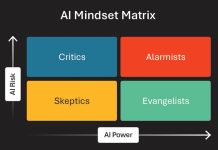Just when quiet quitting seemed to be a thing of the past and many companies have some semblance of an in-office policy in place, there’s this: If you want to get 100% effort from your employees, ask for 85.
Wait. What?
That’s the report from Rachel Feintzeig, who writes about workplace trends for The Wall Street Journal.
“Some coaches and corporate leaders have a new message. To be at your best, dial it back a bit,” Feintzeig wrote recently.
The sweet spot for getting max performance, according to specialists who Feintzeig spoke with, is to shoot for 85% output. “Aiming for perfection often makes us feel awful, burns us out and backfires. Instead, count the fact that you hit eight out of 10 of your targets this quarter as a win,” she writes.
The Generational Shift
“Dialing it back a bit” is anathema to old-school managers — particularly those in the hard-charging world of sales — who are continually looking for ways to coach their team members to exceed expectations. However, in a world in which millennials make up the bulk of the work force and Gen Z is predicted to account for one-third of workers globally within two years, old- school approaches may be a death knell.
This is our annual report on motivating stellar performance and, when it occurs, recognizing people with something other than money. That concept is not new. President’s Club trips and points programs for merchandise rewards have been around for decades. Research that has existed almost as long shows that cash rewards such as bonuses quickly become an expected component of compensation and, because they get blended in with household finances, are quickly forgotten.
What is new — at least relatively new — is the mind-set that workers under 30 bring to their jobs. As a trio of executive coaches reported in an article earlier this year in Harvard Business Review, Gen Z (born from approximately 1995 to 2010) is the most racially and ethnically diverse generation in U.S. history.
Gen Zers have played a critical role in the push for workplace diversity, equity and inclusion (DEI). For many Gen Zers, their transition from school to the professional world was interrupted by the COVID-19 pandemic, which included furloughs, loss of mentors and management by Zoom calls.
Not surprisingly, state the authors of the HBR article, research shows that Gen Z may be struggling with engagement at work. According to a 2022 Gallup Poll, 54% of Gen Z employees, slightly higher than any other generation, are ambivalent or not engaged at work.
They offer seven strategies to increase collaboration, commitment and sustained motivation. It shouldn’t surprise anyone that none of their suggestions involves putting more money in their hands.
To be sure, a competitive and livable wage is the starting point for successful recruitment and retention. However, incentives that go beyond cash — and we’re not talking company cafeterias with five-star chefs or breakroom keggers — are table stakes for attracting top talent and driving performance.
Important elements of effective leadership noted in the HBR article include:
- Be transparent – Whether the news is good or bad, younger workers appreciate access to information that impacts their job and the company as a whole. Company performance, strategy shifts, outlooks and other executive- level decisions should be shared in team meetings.
- Show a path to career progression – Younger workers want to know what is expected of them and how to positively control their future.
- Make it clear how their contributions matter – Just as they want their employers to have purpose beyond making money, younger workers want to understand why and how their role matters. This should be part of every formal review and preferably more frequent informal check-ins.
- Create room for autonomy – Let them explore, experiment and learn through failure. They’ll likely more often surprise you with improved processes.
- Provide specific and constructive feedback – Coaching opportunities occur much more frequently than annual or biannual performance reviews. The authors recommend considering having a discussion on how to approach feedback as a life-long self-improvement journey.
What’s Your True Culture?
The importance of recognition is the overarching message of this report. It seemingly goes without saying, and the mention of workplace recognition is frequently met by managers with self-assurance that it’s a regular component of their approach.
Is it really though? Studies and shared stories would indicate it’s not at a number of companies.
A survey by Gallup and Workhuman showed that 81% of leaders say recognition is not a major strategic priority for their organization. Nearly three-quarters (73%) said their organization does not offer managers or leaders best practice training for employee recognition. And nearly two in three leaders say their organization does have a budget allocated to recognition.
According to the report, there is no magic number for how frequently recognition should be given. More important is a feeling that recognition is embedded into a corporate wide philosophy. The Gallup/Workhuman report identifies five factors that are critical to maximizing the impact of recognition: it must be fulfilling, authentic, equitable, embedded in the culture and personalized.
Companies that do recognition well, get as much as they give. “Recognition is a two-way street,” the report states. “When
organizations make a point of celebrating employees’ successes and contributions, those employees pay it forward. They become brand ambassadors who help spread the word about products, services and their workplace. In other words, when organizations appreciate employees for the value they add, they add more value by attracting customers and future employees to the organization.”
In today’s competitive talent market, recognition isn’t a nice- to-have, it’s essential.
“The global pandemic and the macro social movements that have shaped Gen Z have changed the rules of the game in the workplace,” the authors of the HBR article state. “More than any other generation, this cohort is looking to those in positions of authority to prove themselves with transparency and follow- through. You can support them in their professional development by demonstrating your investment in their success, flexing your management style, and communicating inclusively. After all, for Gen Zers, actions speak louder than words.”





